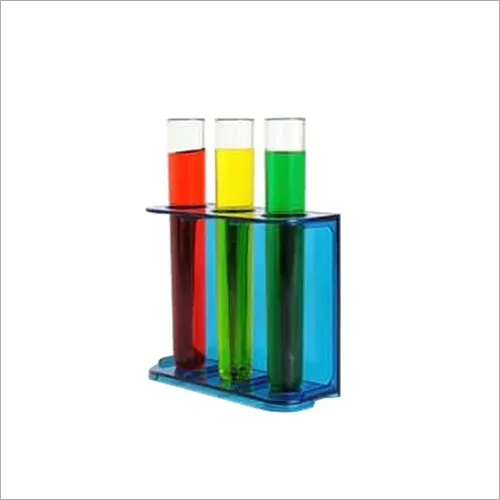What are the Benefits, and Applications of the Organic Compound Glutaraldehyde

Chemicals play an important role in many parts of work from industries to the healthcare system. Glutaraldehyde ensures to maximize the efficiency of work in the healthcare system to water treatment plants.
In this blog, we execute to understand the benefits, applications, and safety measures of the organic compound Glutaraldehyde.
What is Glutaraldehyde?
Glutaraldehyde is an organic compound used to sterilize equipment in the medical industry. It’s a colorless liquid with a pungent odor. It acts as a disinfectant in dental and medical to effectively eliminate harmful microorganisms on surgical instruments. Glutaraldehyde-based products are effective sterilants and disinfectants for medical devices that cannot sterilized by steam. They are particularly heat-sensitive for lensed instruments that are commonly subjected to high-level disinfection between patient uses. As a cold sterilizer, it is commonly used as a 2%-4% aqueous solution.
Benefits of Glutaraldehyde
Powerful disinfectant and sterilant
It’s a powerful and effective chemical for extensive microorganisms, including bacteria and viruses. It’s a preferred choice in medical and labs for sterility. It has prolonged antimicrobial action and maintains efficiency over time. It’s safe for materials like metals, plastics, and rubber.
Versatile fixative in biology
It is used to fix tissues and cells for detailed imaging and examination of structure in microscopy of electrons or minute particles.
Effective cross-linking agent
Glutaraldehyde solution is used for the manufacturing of polymers, where it provides strength and durability to materials. In protein cross-linking, it reacts with amino groups in proteins, to stabilize enzymes. It creates stable cross-links in biochemistry and molecular biology.
Water treatment plant
It’s particularly useful in cooling towers and oilfield water systems to control water contamination. It maintains the safety and quality of water supplies by controlling microbial growth.
Tanning and leather processing
It’s an eco-friendly alternative to chromium tanning, reducing the impact on the environment. It improves quality and provides durable leather products. It helps to create leather soft, flexible, and resistant to degradation.
Industrial and consumer products
It acts as a preservative in various industrial and consumer products like household cleaners, personal care, and cosmetics to prevent the growth of microbes and extend the shelf life of products.
Applications of Glutaraldehyde
Healthcare and Medical
In pathology labs, it’s widely used to fix biological tissues for microscopic examination. In hospitals and clinics, Glutaraldehyde sterilization works to sterilize surgical instruments and other medical devices. It controls the infection and ensures safety by killing a broad spectrum of bacteria.
Biotechnology and Research
In research, it’s used to study their interaction and functions in cross-link proteins. It’s important to understand complex proteins. In enzyme immobilization, it’s employed to immobilize enzymes to enhance stability and reusability. It has great use as a biocatalyst and in the production of biofuels.
Water Treatment
In water treatment, it’s used to control microbial growth. It shows stability at low concentrations and stability in extensive pH conditions. So, it’s a great choice for this application. In the gas and oil industry, it’s used to treat water in the process of drilling and extraction where it prevents the growth of sulfate-reducing bacteria.
Leather Tanning
Glutaraldehyde is used to produce high-quality leather with soft, flexible, and durable characteristics. It’s favorable for developing high-quality leather with environmentally friendly characteristics as compared with traditional chromium tanning. It reduces the release of harmful chemicals into the environment.
Manufacturing sector
It’s used to produce adhesives and sealants with superior strength of bonding and durability. It’s particularly used in construction, automotive, and aerospace industries. It’s widely used as a preservative in cosmetics, personal care, and household cleaners. It extends the shelf life of products and ensures safety for use.
Agriculture
In agriculture, Glutaraldehyde is used to control microbial contamination in irrigation systems, greenhouses, and other agricultural settings. It helps to provide the health and productivity of crops with prevention control of harmful bacteria.
Practices for the safe handling of Glutaraldehyde
Use proper local exhaust ventilation to avoid inhalation of vapors or mists.Avoid contact with skin and eyes. In case of accidental contact, rinse the affected area with lots of water.
- It must be stored in a cool and properly ventilated area. It must be avoided with direct sunlight. Keep the container must be closed when not in use.
- Proper labeling of containers and description of hazard warning.
Use of personal protective equipment (PPE)
- To prevent skin contact wear chemical-resistant gloves such as nitrile or butyl rubber.
- Use safety goggles or a face shield to protect your eyes from splashes of it
- Use appropriate respirators, particularly if working in environments with inadequate ventilation.
- Wear lab coats, aprons, or coveralls to prevent skin exposure.
Conclusion
Glutaraldehyde plays an important role in the healthcare industry in sterilizing medical surgical instruments. It essentially is the part of many important sectors. In this blog, we understood every aspect of this useful chemical Glutaraldehyde disinfectant for effective solutions for the leather industry, water treatment plants, microbiology, and many consumer products. Importantly, It must be included with safe handling practices and use of personal protective equipment.
FAQs: Glutaraldehyde
Q1. What is Glutaraldehyde?
Ans. Glutaraldehyde is an organic compound used to sterilize equipment in the medical industry. It’s a colorless liquid with a pungent odor. It acts as a disinfectant in dental and medical to effectively eliminate harmful microorganisms on surgical instruments. Glutaraldehyde-based products are effective sterilizers and disinfectants for medical devices that can be sterilized by steam.
Q2. What are the advantages of Glutaraldehyde?
Ans The advantages of Glutaraldehyde are:
Powerful disinfectant and sterilant: It’s a powerful and effective chemical for extensive microorganisms, including bacteria and viruses.
Versatile fixative in biology: It is used to fix tissues and cells for detailed imaging and examination of structure in microscopy of electrons or minute particles.
Effective cross-linking agent: Glutaraldehyde solution is used for the manufacturing of polymers, where it provides strength and durability to materials.
Water treatment plant: It maintains the safety and quality of water supplies by controlling microbial growth.
Tanning and leather processing: It improves quality and provides durable leather products. It helps to create leather soft, flexible, and resistant to degradation.
Industrial and consumer products: It acts as a preservative in various industrial and consumer products like household cleaners, personal care, and cosmetics.
Q3. What are the practices for the safe handling of Glutaraldehyde?
Ans. The practices for the safe handling of Glutaraldehyde are:
- Use local exhaust ventilation to avoid inhalation of vapors or mists.
- Avoid contact with skin and eyes. In case of accidental contact, rinse the affected area with lots of water.
- It must be stored in a cool and properly ventilated area. It must be avoided with direct sunlight. Keep the container must be closed when not in use.
- Proper labeling of containers and description of hazard warning.
Q4. Name some personal protective equipment (PPE) ?
Ans. Some personal protective equipment are:
- To prevent skin contact wear chemical-resistant gloves such as nitrile or butyl rubber.
- Use safety goggles or a face shield to protect your eyes from splashes of it
- Use appropriate respirators, particularly if working in environments with inadequate ventilation.
- Wear lab coats, aprons, or coveralls to prevent skin exposure.
Related Blog:


